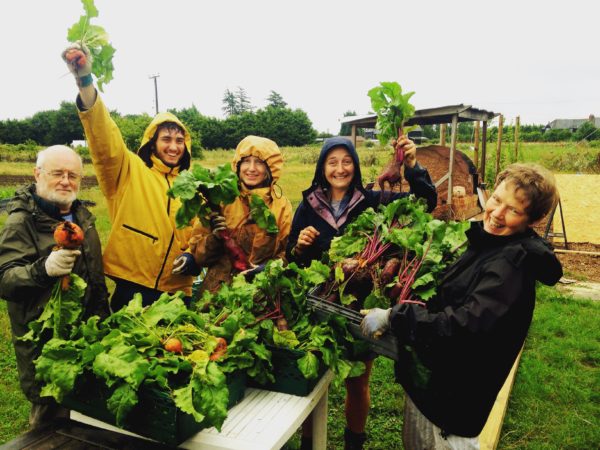
This veg has it all – it’s healthy, pretty, and can handle the cold in the UK like a champ. Plus, it tastes amazing! And if you’re not into peeling, no worries. Just give them a good scrub under running water, and you’re good to go.
Ancient Food, Powerful Medicine and Natural Colorant
Beetroot has a rich history dating back to ancient times. It was initially cultivated by the Romans and was valued not only for its roots but also for its leaves, which were used as a food source.
Beetroot is traditionally known for its ruby colour, but depending on the level of the pigment may also be found with gold, white or pink and white stripes. In the Middle East, beetroots were grown primarily for their greens, and still today beetroot tops are favoured by top chefs.
For centuries, beetroot has been used as a remedy for various conditions, particularly those linked to digestion, the immune system and blood-related ailments. Rich in iron, calcium, fibre, as well as vitamins A and C, beetroot remains a highly regarded natural remedy. It improves cellular functionality, lowers blood pressure, and boosts heart and skin health
It is known that in the middle of the 19th century wine often was coloured with beetroot juice. In some traditions beetroots are used to colour eggs. The vibrant red pigment in beets, called betacyanin, is used as a natural dye. It has been historically employed to colour fabrics, cosmetics, and even ink.
How to Eat
Beetroot is incredibly versatile in the kitchen. The earthy sweetness of beetroot pairs well with both savoury and sweet dishes.
Curiously, beetroot is often found pre-cooked in the shops. This might be due to its lengthy cooking time or the potential for staining hands and chopping boards. We suggest opting for raw beets and enjoying the cooking process at home.
- Boiling beetroots is probably the most popular way of preparing these gorgeous roots. You don’t have to peel them beforehand. Boil gently for for about an hour (depending on size) until the skin will peel away easily.
- Steaming is a very suitable alternative to boiling as it reduces the nutrients lost into the water. Our Beetroot, Potato and Fresh Spinach Salad is a good inspiration to start steaming your beets.
- Roasting or baking beetroots is another easy and delicious way to cook them, but cover them with foil or a lid to trap the steam and stop them drying out. If you don’t have time for chopping, you can simply wrap them in kitchen foil and bake for up to two hours, depending on size. Our Easy Roast Root Curry is a quick and delicious way to enjoy your beets roasted.
- Eating beetroot in soup is a winner. Beetroot, Carrot and Celeriac Soup shows how beetroot compliments most of the winter roots. Or bring some Asian flavours into the kitchen with this Thai Coconut and Beetroot Soup. Beetroot and Cabbage Borsch is one of our farm favourites.
- Stews, risotto and stir fried type of dishes. Beetroot Pachadi is very inspirational recipe if you want to try some South Indian cuisine. Beetroot Hash with Eggs is simple and tasty seasonal treat, or try this Creamy Beetroot Risotto
- Tarts and pies. Beetroots can be used for all sorts of stuffing. This Beetroot Sausage Roll recipe is creative and delicious vegetarian alternative. Beetroot, Goat’s Cheese and Hazelnut Tart is a beautiful centre piece or side for any occasion
- Eat beetroot raw – We love raw beetroot, and it’s a speedy way to prepare them – just grated. Check out all these lovely salads: Seasonal Sprouting Katchumbar Salad, Beetroot and Carrot Salad with Orange and Cumin Dressing, Rice Salad with Beetroots and Walnuts. And yes, beetroot is great for juicing! Our favourite combination is beet, orange, apple, celery and lemon.
- Desserts. Naturally high in sugar, beetroots are fantastic in cakes and puddings. We love our Beetroot and Chocolate Cake which uses more beetroot than sugar. This Raw Chocolate Pudding with Raspberry and Beetroot is an absolute treat!
Beetroot Loves
Garlic, cumin, basil, caraway, chives, cloves, coriander, dill, ginger, fennel, sage, thyme and tarragon.
Cream, yogurt and goat cheese.
Nuts, mustard and vinegar.